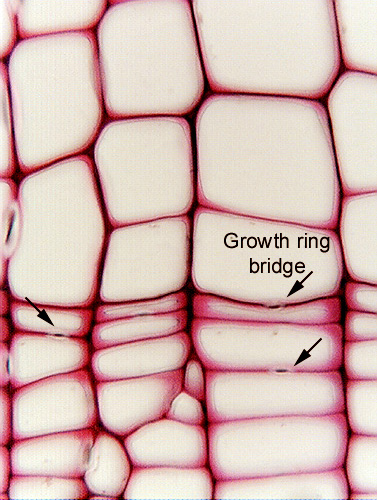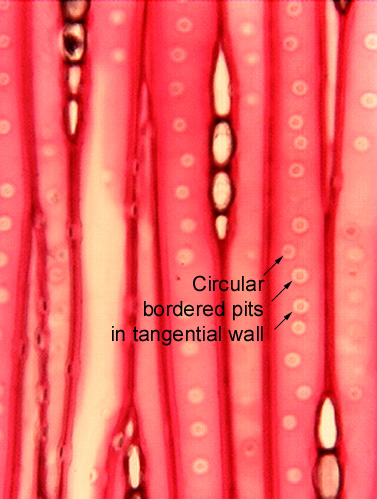 Fig.
15.2-10a and b. Transverse and tangential sections of white pine
wood. These high magnifications show that circular bordered pits do occasionally
occur in the tangential walls of conifer tracheids. But notice that this is in
the latewood, produced just before the vascular cambium became dormant during
autumn and winter. None is visible in the earlywood at the top of the micrograph
of the transverse section. One circular bordered pit occurs on the wall between
a latewood tracheid and an earlywood tracheid – such a pit is called a growth
ring bridge. In the tangential section, it is more obvious that the
circular bordered pits in the tangential wall are actually relatively abundant
but they are also rather small.
Fig.
15.2-10a and b. Transverse and tangential sections of white pine
wood. These high magnifications show that circular bordered pits do occasionally
occur in the tangential walls of conifer tracheids. But notice that this is in
the latewood, produced just before the vascular cambium became dormant during
autumn and winter. None is visible in the earlywood at the top of the micrograph
of the transverse section. One circular bordered pit occurs on the wall between
a latewood tracheid and an earlywood tracheid – such a pit is called a growth
ring bridge. In the tangential section, it is more obvious that the
circular bordered pits in the tangential wall are actually relatively abundant
but they are also rather small.